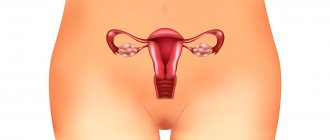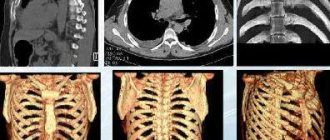Hysteroscopy before IVF
Before undergoing IVF, a woman is prescribed a comprehensive examination, which allows us to assess the functioning of the ovaries and uterus and their condition. Investigations usually include hysteroscopy.
Hysteroscopy is a minimally invasive diagnostic method in which the uterine cavity can be examined with a hysteroscope. This is a fiber-optic device with backlight and a mini-camera that transmits the image to the screen.
How is diagnostic hysteroscopy performed?
The method does not involve any incisions, sutures, or bleeding, so it is classified as minimally invasive. However, during the procedure, it is important that the patient lies still and does not feel pain or discomfort, so doctors use local anesthesia, and in some cases, general anesthesia.
Hysteroscopy takes place in several stages:
- The doctor inserts a tube with a camera through the vagina and cervix.
- The image is transmitted online to the screen. This allows the gynecologist to assess the condition of the uterine cavity and study the structure of the endometrium. The doctor will also determine the thickness of the mucous layer, monitor its condition, including detecting congenital anomalies, polyps, neoplasms, and adhesions.
- If the doctor needs to obtain data for further research (tissue biopsy) or carry out therapeutic manipulations, manipulators - surgical instruments - are additionally introduced into the uterus through an installed tube.
The procedure is carried out only on an empty stomach. A cleansing enema is first performed to empty the intestines, and the woman also needs to empty her bladder.
Hysteroscopy is performed on a gynecological chair.
Please note that you must follow the recommendations after the manipulation. Within 3–4 weeks you should:
- Avoid heavy lifting and high physical activity.
- Avoid intimacy with your partner.
- Avoid baths, swimming pools, saunas.
- Pay special attention to intimate hygiene (in particular, doctors recommend abandoning tampons and replacing them with sanitary pads).
Indications for endometrial hysteroscopy
Today, endometrial hysteroscopy is included in the list of mandatory examinations for suspected infertility. The procedure is especially important when preparing for IVF. The examination allows doctors to assess the thickness of the endometrium, the features of its structure, and eliminate pathologies that can lead to an unsuccessful attempt at in vitro fertilization.
Let's say that during the manipulation the doctor identifies adhesions or polyps. He can quickly remove them, which saves the woman from another intervention and recovery. If the doctor detects changes in the structure of the endometrium, he will be able to take a sample for histological examination, which will determine the causes of the abnormality.
Advantages of hysteroscopy before IVF
- An important advantage of the method is the ability to get an idea of the state of the uterus and detect abnormalities in the structure that may prevent successful implantation of the embryo.
- The procedure allows you to assess the thickness and structure of the endometrium and determine how ready the uterus is for pregnancy. The characteristics of the endometrium are important in IVF, since they can cause failures when the embryo cannot attach to the wall of the uterus.
- Hysteroscopy gives the doctor the opportunity to not only detect problems, but also quickly and safely eliminate them. For example, excessive or insufficient thickness of the endometrium, cysts, polyps, adhesions, fibrous cords can prevent the embryo from implanting into the mucous layer. Eliminating these problems increases the chances of successful IVF.
- During the procedure, minor trauma to the endometrium occurs. This often provokes an increase in the mucous layer of the uterus, which is important if its thickness is insufficient. Due to this, the risk of failure during embryo transfer is reduced.
- Complications after manipulation are unlikely.
- The recovery period after the diagnostic procedure is no more than three days.
Cryoprotocol: the essence of the process
Where do frozen embryos come from? Usually, as a result of the in vitro fertilization procedure, it becomes possible to obtain more than 2 high-quality embryos for transfer into the woman’s uterine cavity. But transferring more than 2 embryos at the same time is not practiced, so the remaining ones are frozen and can be used for the next embryo transfer.
For freezing, a current technique is used - it is called vitrification. This technology is characterized by rapid freezing, which minimizes the risks for embryos. Cryo-freezing is a safe and high-quality procedure, since embryos frozen at the blastocyst stage have a maximum survival rate and good implantation potential - they have an excellent chance of being fixed in the uterine cavity after embryo transfer (up to 60-70%). The cryoprotocol is considered the most effective and innovative method of treating infertility. The technology of cryo-freezing and frozen embryo transfer is used today in situations where the standard in vitro fertilization procedure is unsuccessful - or the couple is at the stage of planning a future pregnancy.
Negative aspects of hysteroscopy before IVF
- Using local anesthesia or general anesthesia is always a risk. First, it is difficult to predict how the body will react to anesthesia. Secondly, the consequences will not keep you waiting. General anesthesia negatively affects cognitive functions (memory and attention are weakened), the liver and kidneys, and the nervous system; after anesthesia, nausea and vomiting often occur. This means that the body needs to recover. Therefore, experts believe that in some cases the procedure may not be performed. It is not prescribed if a woman is diagnosed with endometriosis or neoplasms have been detected, and ultrasound has not shown a change in the thickness of the endometrium.
- This is a paid procedure, which means it is not available to all couples planning a pregnancy.
- Hysteroscopy, like other procedures involving intervention (even minimally invasive), has contraindications. For example, before manipulation it is necessary to exclude infections of the pelvic organs - otherwise the inflammation may spread.
Most doctors recommend the procedure. However, it also has a direct indication - repeated IVF after one or more unsuccessful attempts.
Hysteroscopy before IVF: on what day is it scheduled?
Choosing the right time for hysteroscopy is important because it allows you to obtain accurate information about the condition of the uterus, structure, and thickness of the endometrium. A specific day can only be determined by a gynecologist, taking into account the purpose of the examination and preliminary diagnosis:
- If it is necessary to exclude a cyst, adhesions, neoplasms or fibroids, manipulation is prescribed on the 5th–10th day of the cycle. During this period, it is easier to identify abnormalities, since the thickness of the endometrium is not too great.
- When a specialist wants to assess the thickness of the endometrium, examine its structure, and determine how ready the mucous membrane is for embryo implantation, the procedure is carried out from the 15th to the 18th day of the cycle. This period is called the “implantation window”, since the mucous membrane is ready for replanting.
At the very beginning of the cycle (during menstruation), manipulation is not carried out, since the doctor will not be able to obtain any useful data about the condition of the endometrium.
For the operation you need to submit
- blood for syphilis,
- HIV,
- hepatitis,
- smear on vaginal microflora,
- complete blood count with platelets and clotting time,
- biochemical blood test: total protein, bilirubin, cholesterol, ALT, AST, urea, creatinine, CRP, SC, coagulogram;
- general urine analysis;
- ECG;
- undergo fluorography (valid for 1 year);
- do a bacterial culture from the cervical canal for microflora with determination of sensitivity to antibiotics (valid for 1-2 months),
- Ultrasound.
The shelf life of other tests is 7-10 days.
Results of hysteroscopy before the IVF procedure
When a specialist prescribes hysteroscopy, he expects that the data obtained will help develop further tactics:
- If no abnormalities were detected during hysteroscopy, and the thickness of the endometrium is from 8 to 12 mm (normal), IVF can be performed in the next cycle.
- If the doctor has identified pathologies or performed surgery in parallel with the diagnosis, IVF can be performed only after all problems have been eliminated and the uterus has recovered. This takes from 2 to 5 months. The specialist will prescribe a comprehensive treatment for the patient, which includes taking hormonal and anti-inflammatory drugs, vitamin and mineral complexes.
Advantages and disadvantages
The main advantages of the cryoprotocol include:
- increasing the likelihood of pregnancy even if there is a history of unsuccessful IVF;
- possibility of use even with the decline of reproductive function;
- minimizing the amount of stimulation of superovulation during IVF;
- prevention of ovarian hyperstimulation syndrome;
- the ability to choose the most favorable moment for implantation;
- reducing the likelihood of complications during pregnancy;
- relatively low cost.
The cryoprotocol has only two disadvantages. Firstly, participation in the program is possible only if there is a sufficient number of full-fledged embryos. Secondly, the couple will have to pay for storing the embryos.
Application of Pregnoton after hysteroscopy
For endometrial abnormalities, taking vitamin and mineral complexes plays an important role. But many women ignore the recommendations of specialists, because IVF is an expensive procedure and they want to save money. This cannot be done.
If the endometrium is thin, doctors prescribe the Pregnoton complex, which is designed specifically for women with reduced fertility. The drug contains vitex extract, arginine, vitamins and minerals that are necessary for the full functioning of the reproductive system.
Taking the drug in preparation for IVF improves the quality of eggs and increases the likelihood of successful implantation. This effect is due to the influence of the components of the drug:
- L-arginine normalizes blood circulation in the pelvic organs and improves endometrial nutrition.
- Iodine and vitex extract stabilize hormonal levels.
- Folic acid and vitamin E promote egg growth.
The study showed:
- The thickness of the endometrium in women who did not take Pregnoton in preparation for IVF at the time of embryo transfer was 7.6 mm (the norm is from 8 to 12 mm).
- At the beginning of the experiment, the thickness of the endometrium of women who used Pregnoton did not reach 7.4 mm. After taking the drug, the thickness reached 10.8 mm, which is optimal for embryo implantation. This effect is possible due to the normalization of blood circulation in the uterus (L-arginine), improving the functioning of the reproductive system as a whole (iodine, folic acid, vitamin E). As a result, in women who took the drug, the number of pregnancies after IVF was twice as high as in women whose preparation did not include a course of Pregnoton.
Statistics
According to the latest statistics, the likelihood of pregnancy using a cryoprotocol is higher than with a standard IVF program. The probability of embryo implantation in the cryoprotocol is 41-45%, while in the standard program it is 32-35%. In the classical protocol, pregnancy occurs in 42% of cases, while in the cryoprotocol - in almost 57%. The highest chances of becoming pregnant are in women under 35 years of age with tubal factor infertility. Scientists explain this by changes in the properties of the endometrium under the influence of large doses of hormones used in a normal cycle. As a result, the mucous membrane is not always ready to receive the embryo. In the cryoprotocol, the reproductive specialist has the opportunity to specially prepare the endometrium for the upcoming conception, therefore the likelihood of pregnancy is higher. The statistics of cryoprotocols in the natural cycle, with stimulation and hormone replacement therapy are approximately the same.
Important. Since 2021, the transfer of cryopreserved embryos when performing an IVF cryoprotocol is paid for from the compulsory medical insurance fund.
conclusions
Before IVF, it is important to assess the readiness of the uterus for embryo implantation. This can be done using a minimally invasive procedure – hysteroscopy. It increases the chances of a successful replantation, but is not mandatory for all women.
Whether there are indications for the procedure can only be determined by a doctor based on the medical history and data from other tests. Hysteroscopy is mandatory only for those women who have already had several unsuccessful IVF protocols.
For successful IVF, you must strictly follow the specialist’s recommendations and be sure to take medications to prepare for embryo implantation.
THIS IS NOT AN ADVERTISING. THE MATERIAL WAS PREPARED WITH THE PARTICIPATION OF EXPERTS.









